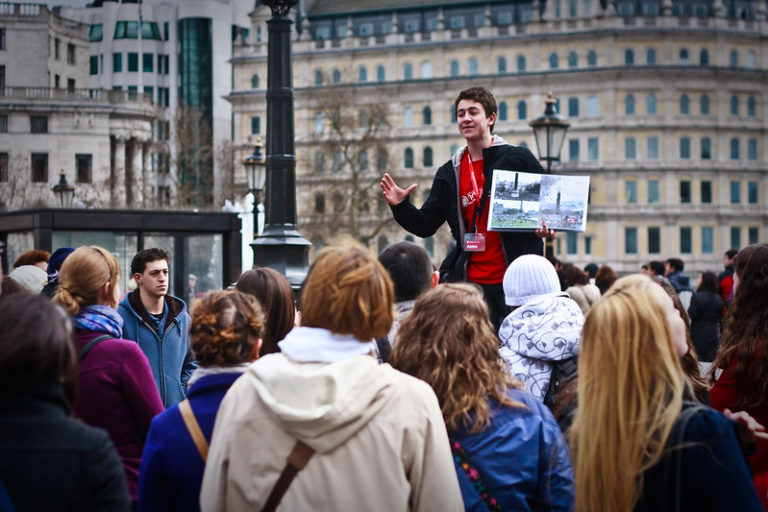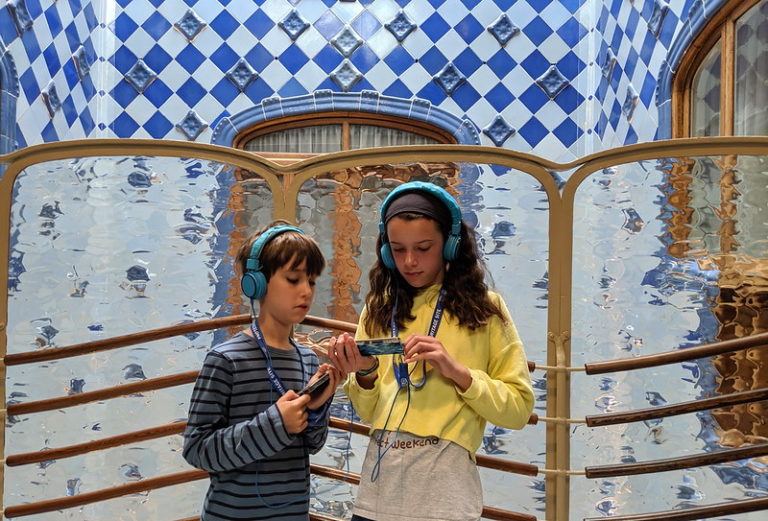Having spent most of my adult life writing and editing interpretive content for art museums, it’s fair to say that I am all about language and semantics. Recently I got into the weeds with my colleagues in an attempt to define some key terms internally—Guide vs. Tour. It wasn’t a heated conversation per se, but it was fairly circular. It became clear that we all use these terms to mean slightly different things…

This got me thinking about the ways in which our different understanding of these terms impacts our ability to meet visitor expectations. I mean how can we best communicate the difference between a “guide” and a “tour” to visitors when we cannot land on a shared definition or meaning amongst ourselves?
As it turns out for many muse-tech people, “guide” and “tour” are interchangeable. For example, “tour” has at least 5 different meanings among Guru staff. For some of us it equates to a feature offered on our platform, for others it is the app itself, while those of us from museum backgrounds understand a “tour” as curated content delivered via a live guide or a mobile device.
In my mind “guide” and “tour” are two distinct offerings, regardless of how they are delivered. A guide is a wayfinding tool, be it a person, printed map or brochure, menu of locations and what’s on view, or an app that helps visitors navigate through your museum or site.
A tour, on the other hand, presents object or exhibition specific information that is educational but does not necessarily provide a linear path for the visitor to follow. It is a “guided” content experience… see the challenge in semantics here?
I think this is a pretty common definition among tour takers and tour givers but as a field we have broadened the concept of “tour” to include self-guided offerings, which is another ball of wax altogether….

Basically, we (museums and cultural attractions) are collectively suffering from a language barrier. And if we are suffering from a language barrier, how can we guarantee that audience expectations are set up effectively? Even if we can agree that a “guide” is something used for wayfinding and other information, what then, exactly, do we mean when we say “tour”?
Basically, we (museums and cultural attractions) are collectively suffering from a language barrier. And if we are suffering from a language barrier, how can we guarantee that audience expectations are set up effectively?
Scurry down the proverbial rabbit hole a bit further and we get into types of guides:
Curator-led; Docent-led ; Educator-led; Visitor Services Associate-led; Facilitator-led; Tour Guide (meaning a 3rd party guide); Audio Guide; Printed Guide
And types of tours: Linear or chronological; Narrative; Themed; Interview-based; Audience specific: adult, kids, teens, verbal descriptions; Collection specific, Special Exhibition, Behind the scenes or VIP experiences
Self-guided: via brochures, family guides or scavenger hunts and mobile tours featuring audio or video content on demand
The list goes on and on….
The various ways we interpret what these words or tour types signify does not necessarily align with visitor expectations, so the conundrum is how do we offer guided and/or self-guided tour experiences that actually means what visitors think it means?
We’ve all been confronted by the unhappy visitor who expected a guided tour and was handed an audio tour (usually at an up charge) or who expected to hear from the curator and was led by a volunteer docent instead. Conversely, there are those who opt into the audio tour only to be disgruntled that the app did not feature a map or that the “thing” they came to see was not included in the tour content. And with more and more museums and sites eliminating contact transactions, who is left to field these complaints? Security and other frontline staff who may or may not be able to troubleshoot effectively depending on their training and bandwidth.
In an effort to ease visitor and staff pain points along the visitor journey, it seems to be in our best interest as a field to establish shared language around tours and guides. Of course, I recognize that we all have bigger fish to fry at the moment, but I hope this rant will provide a starting point for a more thoughtful and inclusive conversation down the line.


